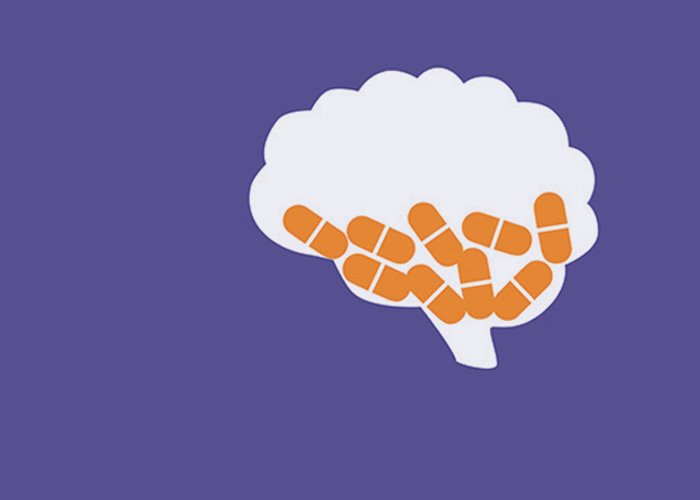
EQUIPD
Start Date: 7/1/2024 End Date: 4/30/2027 Funder: NIH-NINR: National Institute of Nursing Research – National Institutes of Health Description: Nonpharmacological pain treatments (NPTs) are supported by evidence and widely recommended in treatment guidelines. However, these approaches remain underused. Even as access increases, several patient-related barriers remain, including lack of knowledge about NPT availability and effectiveness,...
learn more
Developing and Evaluating the Machine-Learning Opioid Prediction & Risk-Stratification E-Platform (DEMONSTRATE)
Funder: NIH: National Institute on Drug Abuse (NIDA) Start Date: 11/30/2023 End Date: 4/30/2026 Description: An unprecedented rise in opioid overdose and opioid use disorder (OUD) has become a public health crisis in the US. In response, health systems, payers, and policy makers have developed or adopted measures and programs to target individuals at high-risk...
learn more
Understanding Costs of Care in Indiana
Characterizing the Indiana Context: An update to understand Costs of Care in the state Start Date: 8/8/2024 End Date: 10/31/2024 Funder: Rising health care costs in Indiana, coupled with relatively poor health outcomes, are of concern to Indiana leaders. Stakeholder groups across sectors recognize that failing to address the state’s public health issues will impede...
learn more
Urban-Rural Environmental Stress
Inequities in ADRD
Assessing Urban-Rural Environmental Stress Inequities in ADRD through Ecological Momentary Assessment Start Date: 7/10/2024 End Date: 6/30/2029 Funder: This study aims to identify and understand the role of environmental stressors in the development of Alzheimer’s Disease-Related Dementias (ADRD) and related health inequities across urban and rural populations. We will recruit 600 participants (300 urban dwelling...
learn more
Advancing Surveillance of Congenital
Heart Defects
Advancing Surveillance of Congenital Heart Defects: Using Unparalleled Informatics and Data Science to Improve the Health of Children, Adolescents, and Adults Start Date: 9/30/2024 End Date: 9/29/2029 Funder: To better understand the magnitude and burden of CHD in Indiana, this project uses population-based surveillance approaches to: (1) employ available methods for identification of CHD cases...
learn more
ADEPT-ICU
Attenuating Depression with Internet Cognitive Behavioral Therapy (CBT) to Slow Cognitive Decline in Older Intensive Care Unit (ICU) Survivors Start Date: 8/15/2024 End Date: 6/30/2029 Funder: Alzheimer’s disease and related dementias (ADRD) affect 47 million people worldwide with an annual global cost of $818 billion. The risk of developing ADRD is disproportionately borne by older...
learn more
Transplant Research for Enhancing Access Team (TREAT)
The Transplant Research for Enhancing Access Team (TREAT) is a multidisciplinary collaborative team of clinicians, biostatisticians, epidemiologists, behavioral scientists, and data scientists from the Regenstrief Institute, Indiana University, and Emory School of Medicine’s Department of Surgery. TREAT has two main areas of research interest, including one in 1) transplant health services and outcomes research and...
learn more
Decreasing Delirium through Music
What is the purpose of this research study? The purpose of this study is to find out if patients who are in the ICU and using a ventilator will benefit from listening to music. Patients on a ventilator in the ICU often experience feelings of confusion which is called delirium. Patients may also experience pain...
learn more
Tracking Post-COVID-19 Conditions (Track PCC)
Tracking the burden, distribution, and impact of post COVID-19 conditions in diverse populations for children, adolescents, and adults Dates: 09/2022-09/2027 In collaboration with the CDC, Indiana and Regenstrief Institute are studying the incidence and prevalence of long COVID or Post-COVID-19 Conditions (PCC). We will recruit Hoosiers ages 7+ who have recently tested positive for COVID-19...
learn more
Indiana Addiction Data Commons
Who can work with the IADC and access the underlying data? The IADC is a resource which can be leveraged by researchers, public health professionals, community organizations, and policy makers. Access to the underlying data will be dependent on data governance limitations and will vary from use case to use case. The IADC will work with data requestors to...
learn more
Brain Safe
This study is a randomized clinical trial (RCT) of the efficacy of a direct-to-consumer intervention called Brain Safe to primarily reduce older adults’ exposure to prescription anticholinergics and secondarily improve cognitive function and health-related quality of life. Over 42 months, the trial will enroll 700 community-dwelling older adults who were prescribed one or more strong...
learn more
R2D2
STUDY DATES: 05/01/2019 – 03/31/2024 As many as 30% of older adults use a medication that increases the risk of Alzheimer’s disease and related dementias (ADRD), however no study has yet tested whether stopping anticholinergics in current users results in improved and sustained benefit on cognition. This proposal will conduct a randomized trial to determine...
learn more
IN-PEACE
Principal Investigator Greg Sachs, M.D., describes findings of the IN-PEACE study. This study tested an innovative supportive care model that integrates dementia care and palliative care in the community setting for patients with moderate to severe dementia and their primary caregivers compared to usual care. Caregivers of patients with Alzheimer’s disease and other dementias...
learn more
HHS and IHS Health Information Technology Modernization Initiative
While Regenstrief Institute’s Global Health Informatics (GHI) team is well known in many parts of the world for its expertise in developing open technologies in solidarity with health practitioners in resource-constrained environments, this project focuses on an underserved population within the United States. Evaluating an HIT System The work is designed to help answer the...
learn more
Exploring the Use and Outcomes of Health Information Exchanges in Emergency Settings
Health information exchange (HIE) involves the electronic exchange of clinical and/or administrative health data across the boundaries of health care institutions, health data repositories, and states. Widespread HIE has the potential to improve health care, and HIE has been described as a critical component of recent health reform initiatives including value-based care and patient centered...
learn more
Leveraging Health Information Exchange to Build a Patient Registry for Traumatic Brain Injury (TBI), Spinal Cord Injury (SCI) and Stroke
Traumatic brain injury (TBI) is one of the most prevalent and severely disabling neurological disorders in the US. Nationwide, 1.7 million people experience TBI each year of which 3 to 5 million live with a TBI-related disability. Additionally, deaths due to TBI represent about a third of all injury-related deaths in the US. As such,...
learn more
Decisions about Cancer Screening in Alzheimer’s Disease – DECAD
Test the impact of a decision aid for mammograms to support decision making about breast cancer screening for older women with dementia. The decision aid is aimed at caregivers of women with dementia. Women with AD and other forms of dementia, along with their caregivers, will be randomized to 2 study arms- one arm will...
learn more
Decreasing Alzheimer’s Disease and Related Dementias after Delirium- Exercise and Cognitive Training
During stays in the Intensive Care Unit patients are at a higher risk of delirium, PTSD, and other diseases. The powerful life-saving treatments used in Intensive Care Units can have serious long-term effects on patients’ health. Research by Principal Investigator Babar Khan has already shown that patients who can get up and move during their...
learn more
Mobile Critical Care Recovery Program
The Mobile Critical Care Recovery Program (m-CCRP) is a research study being conducted by the Indiana University Center for Aging Research. During stays in the Intensive Care Unit patients are at a higher risk of Delirium, PTSD, and other diseases. Recovery after discharge is an important part of making sure that true, healthy healing takes place....
learn more
Identifying communicative factors affecting opioid management for chronic pain
The use of opioid medications for the treatment of chronic non-cancer pain has risen dramatically in the past two decades. There are a number of risks associated with the long term use of opioids, most notably the potential for misuse. Successful opioid management strategies for chronic non-cancer pain depend upon effective patient-provider communication. Improving the...
learn more
The Great Lakes Practice Transformation Network
The Great Lakes Practice Transformation Network (GLPTN) is a network of 12 leading medical centers in 8 states committed to a shared vision of improving healthcare delivery through ongoing learning, adoption of evidence-based practices, and active research dissemination. The GLPTN builds on strong research programs at each sites, existing community engagement, informatics infrastructures and data...
learn more
Center for Cancer Population Analytics and Patient Centered Informatics
The mission of this center is to develop team science that combines innovative health information technologies with rigorous health services research methods in order to create knowledge that will have an impact upon the health and health care of patients and populations with cancer in the state of Indiana and the U.S The Center focuses...
learn more
Estimation of PRN sleep medications in the databases using additional clinical information – PRN Sleep Medications
Accurately identifying drug exposure is critical in pharmacoepidemiology studies. However, in the setting of sleep medications, there is no empirical evidence on the consistency of providers in using the ‘as needed’ designation (PRN) when prescribing these drugs or the impact of PRN prescribing on actual usage patterns by patients. Identifying patient characteristics associated with PRN...
learn more
Pharmacogenomics
This project is designed to provide genomics information on a variety of commonly prescribed drugs to determine how genomics data provided to the clinician can change the care provided to the patient as well as the economics of the drugs prescribed by using clinical decision support rules and genomic lab results in both general and...
learn more
Managing Cancer Risk
Colorectal cancer is the second leading cause of death from cancer in men and women in the U.S. Additionally, it is the most preventable but least prevented cancer in this country. Colorectal cancer is highly treatable if found early, but nearly half of adults age 50 or older have not been screened as recommended. Cologuard,...
learn more
OpenMRS – HIV Case Reporting
As a partner to CDC’s Global AIDS program, Regenstrief Institute’s work on OpenMRS is fundamentally focused around ways in which patient record keeping systems (specifically, electronic medical record systems) can improve health outcomes around HIV and other life threatening diseases. By building platforms that empower health care settings in resource poor environments, we support the...
learn more
WeCare Indiana
Indiana faces a crisis related to its youngest residents. The death of a baby before his or her first birthday, termed “infant mortality,” is considered to be one of the most important indicators of the health and well-being of a population, and Indiana’s infant mortality rate is significantly higher than the national average. In 2017,...
learn more
PROMIS
Symptoms account for more than 400 million clinic visits annually in the United States. However, in contrast to specific diseases, symptoms have received far less attention in research, training, and consequently, patient care. Five symptoms that warrant special attention are the SPADE pentad – sleep problems, pain, anxiety, depression, and energy/fatigue. These 5 symptoms are...
learn more
Delivering Hospice and Palliative Care Services to Nursing Home Patients
Having a family member in a nursing home can be an incredibly stressful experience. Families of older adults in nursing homes may not always be aware of options for care, and these options may not always be well understood by the patients themselves. One in four Americans die in a nursing home. Hospice use in...
learn more
Hypoglycemia Risk Calculator
Hypoglycemia is common and dangerous in diabetes mellitus, so identifying at-risk patients may lead to useful preventive strategies. This Regenstrief-Merck partnership aims to design a risk calculator to aid clinicians in identifying at-risk patients who may benefit from preventive strategies. The project team members will conduct a retrospective cohort analysis, focus-group discussions, use of a...
learn more
Treating Obesity in At-Risk Patients
HOME: Healthy-me Online weight-Management Education The main objective for the randomized control trial (RCT) of Video-Conference and In-Person Weight Loss Services for Adult CHC Patients project is to identify effective methods of treating obesity in at-risk populations. A 2kg is associated with a 20% reduction in the 3 year risk of hypertension. We will compare...
learn more
SymTrak
What if there were a way for doctors to easily and effectively track the general symptoms of their patients over time? What if this tracking included input from a loved one, to get a better picture of true wellness? SymTrak hopes to answer these questions by creating a questionnaire to do just that. This set...
learn more
Brain Health Patient Safety Learning Laboratory
Bringing in experts from diverse specialties like industrial engineering, pharmacy, and informatics, the Brain Safety Lab aims to develop strategies to reduce brain harm and increase safety both within and outside of the health industry. Brain Safety Lab is funded by a $4 million grant from Agency for Healthcare Research and Quality to the Indiana...
learn more
Optimistic
As part of our continued goal of partnering with nursing homes in central Indiana, IU Center for Aging Research has received a $621,697 planning grant to evolve the current OPTIMISTIC model into a scalable package for national dissemination. This planning grant is designed to prepare for further implementation and dissemination of the OPTIMISTIC model, developed...
learn more


